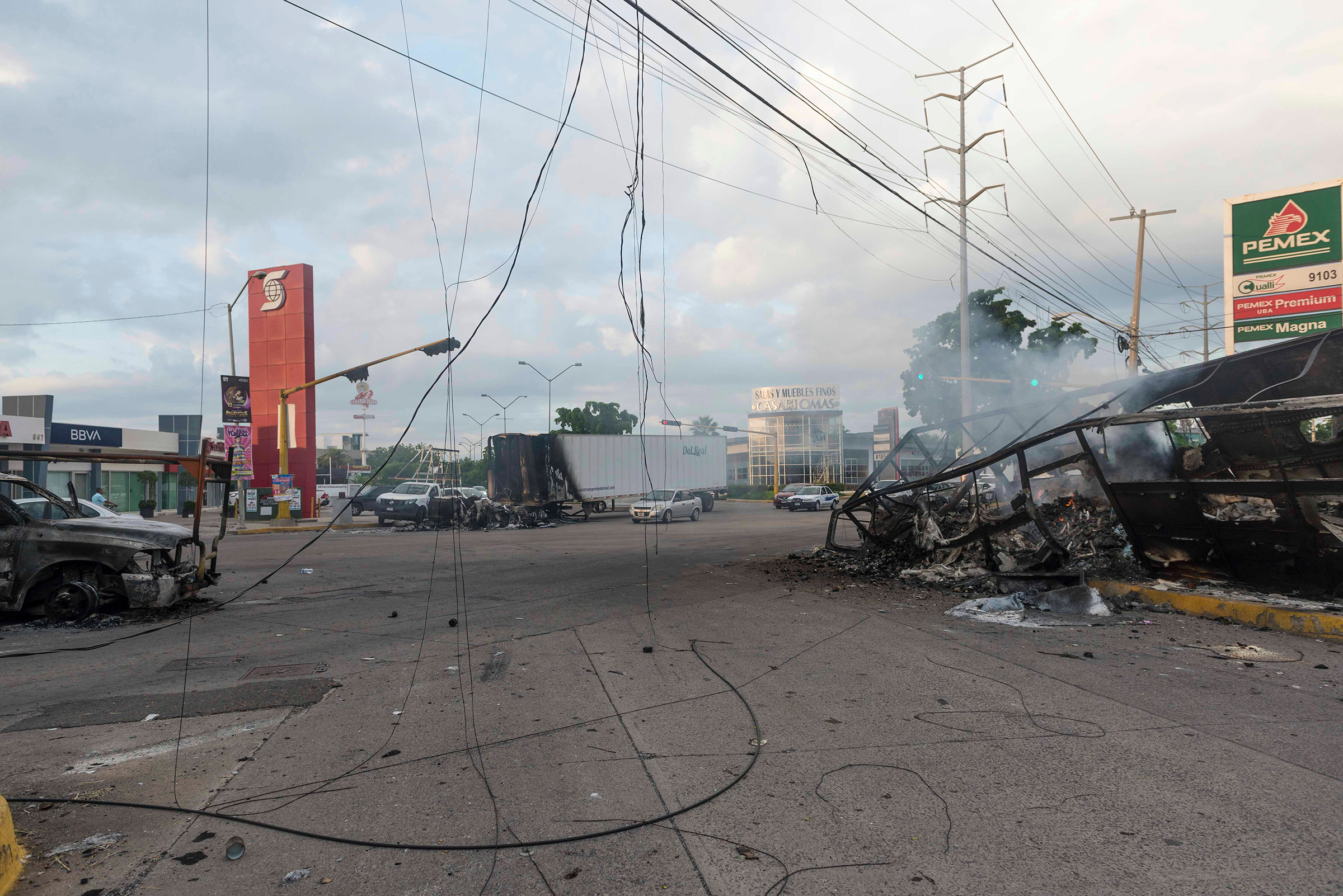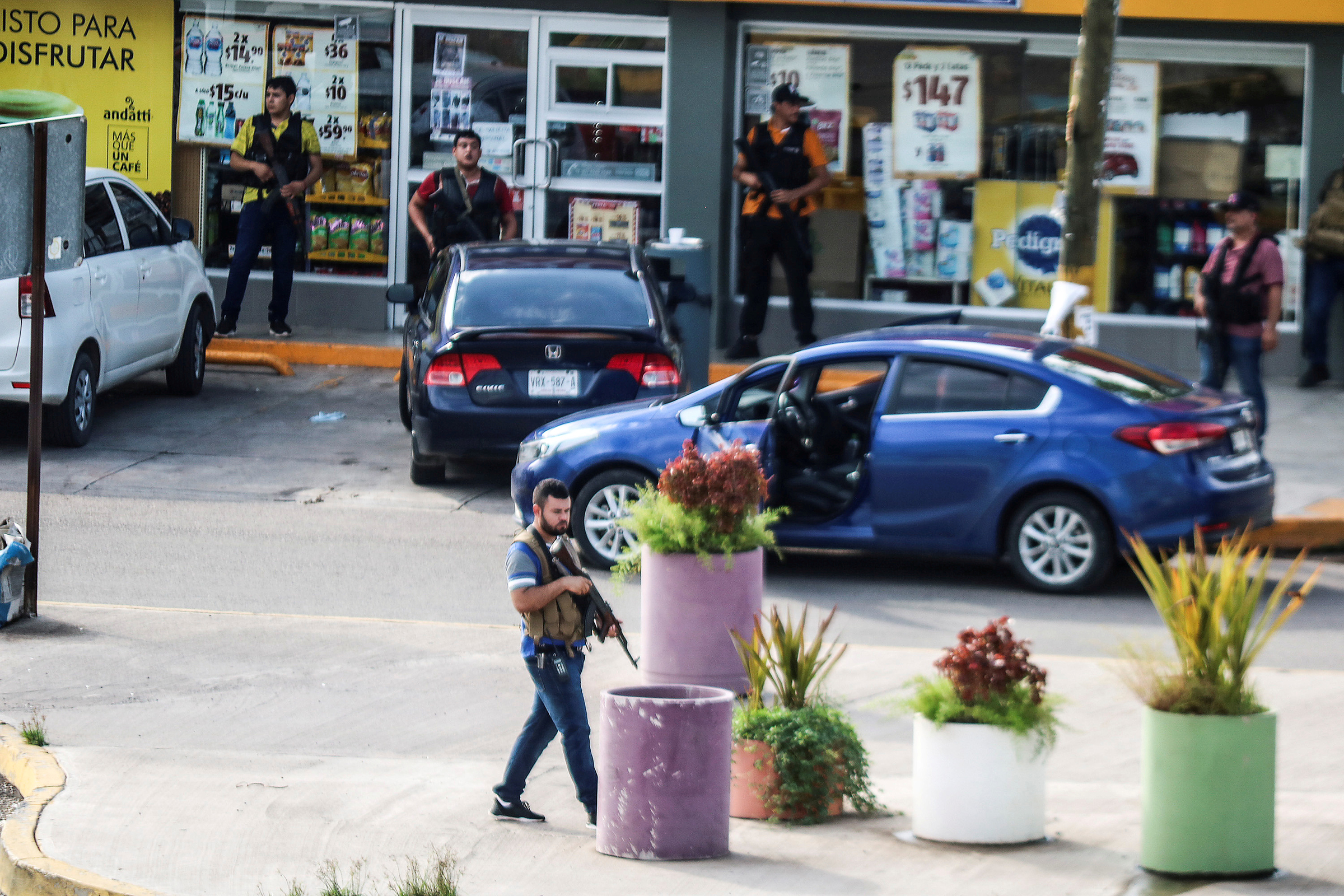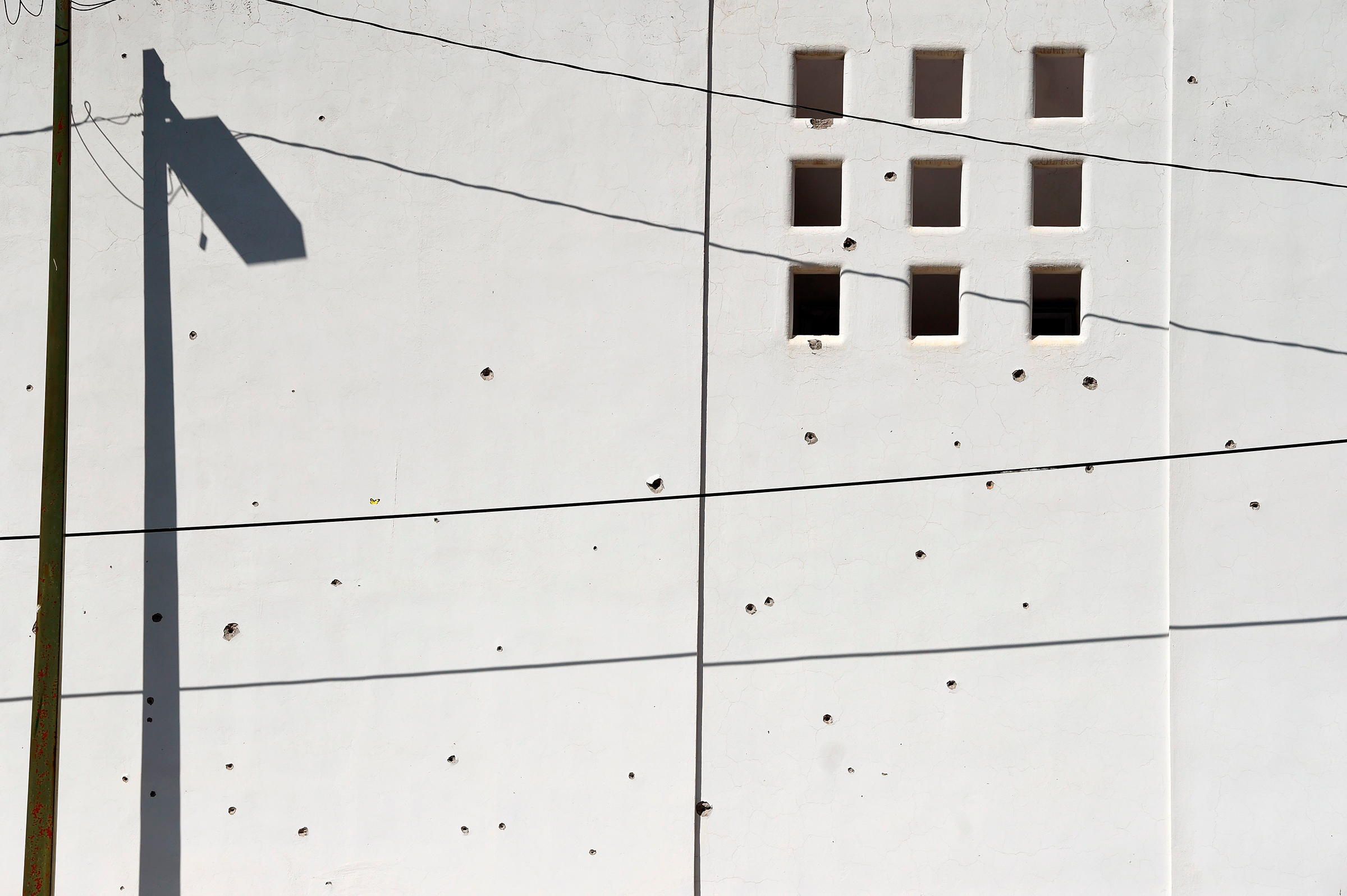In Mexico’s big cities, drug cartel gunmen normally act like phantoms. They hide in safe houses or amid communities, suddenly striking with an assassination or a gunfight, and then disappearing again. Residents know they are there and are scared, but most the time, they can’t see them.
But on Thursday in the Sinaloan city of Culiacan, the cartel gunmen were everywhere. They openly drove in trucks with mounted machine guns, blockaded streets flashing their Kalashnikovs and burned trucks unleashing plumes of smoke like it was a scene in Syria. They took control of the strategic points in the metro area, shut down the airport, roads, and government buildings and exchanged fire with security forces for hours, leaving at least eight people dead. In contrast, everyone else had to act like ghosts, hiding behind locked doors, not daring to step outside.
And in this unusual battle, the Sinaloa Cartel won. Their uprising was in response to soldiers storming a house on Thursday and arresting Ovidio Guzman, the 28-year old son of convicted kingpin Joaquin “El Chapo” Guzman. In February, the U.S. Justice Department announced it had indicted Ovidio Guzman on trafficking cocaine, marijuana and meth. But after hours of cartel chaos, Mexico’s federal government gave soldiers the go ahead to release him. It capitulated.

I’ve covered Mexico’s drug violence for 18 years, written two books about the subject, and seen many extraordinary episodes. In Sinaloa, the cradle of drug traffickers, I’ve repeatedly been on the crime beat chasing bullet-ridden corpses and into the mountains to Guzman’s opium-growing village. But Thursday was different. It wasn’t gangster action; it was a mass insurrection.
“There was panic, terror, the city was under siege,” says Vladimir Ramirez, a political scientist in Culiacan, who like many has continued curfew into Friday. “People slept wherever they were at. Businesses are closed, nobody wants to go out.”
This change has not come overnight. It is the result of a bloody trend of cartels developing insurgent tactics over many years. The use of burning vehicles to block roads was taken from militant protesters; cartels use it to stop the movement of troops and put pressure on the government. The cartels have armed up with stolen military weapons and an endless stream of rifles from the United States. Between 2007 and 2018, more than 150,000 firearms seized in Mexico were traced to U.S. gun shops and factories.And cartels from the Texas border to Guadalajara have learned to protect their leaders with rings of gunmen who can cause trouble to stop their capture.
Yet it was still shocking on Thursday to see how fast the cartel moved and how brazenly the gunmen stayed on the streets. Residents took dozens of photos of the armed thugs that circulated on social media, amplifying the threat. And it was almost a side note that there was a simultaneous prison break in which 51 inmates fled.

“The Sinaloa Cartel demonstrated a tremendous ability to mobilize rapidly and take effective control of the city,” says Raul Benitez, an expert on Latin America’s armed conflicts. “They showed that in Sinaloa, they are the ones who run things.”
In contrast, the Mexican military was in shambles. Officials made contradictory and confusing statements about why the soldiers had gone to Guzman’s house without enough back up. In many points in the city, the cartel gunmen went unchallenged. There were reports that the cartel had held various soldiers hostage and threatened to kill them. And in these circumstances, it was best to let the suspect go, President Andres Manuel Lopez Obrador said Friday.
“You can’t fight fire with fire…We don’t want deaths. We don’t want war,” Lopez Obrador said in his morning press conference. “With justice, we will guarantee peace and tranquility in the country.”
Lopez Obrador won power last year in a landslide election and still enjoys high approval ratings. His decision Thursday to avoid further bloodshed earned support from some. Ramirez, the political scientist in Culiacan, says that the gunmen in Culiacan were not attacking civilians but the menace was clear and they could have unleashed a bloodbath. “It was a threat of terrorism,” Ramirez says. “The government acted with great responsibility.”
Others criticized Lopez Obrador for surrendering to criminals. “His idea of peace and love doesn’t work. He is making the cartel stronger,” Benitez says. “I don’t even know what his strategy is.”

The worry now is that the Mexican government’s decision to release Guzman sets a precedent. If other traffickers are arrested, their cohorts could kidnap people to demand their release. It also raises the specter of the cartel appearing more powerful than the army, which could have implications for governability. There has long been an image of traffickers as rebels and some in Sinaloa call them “valientes” or “brave ones.” Now it appears like these rebels are almost in control.
This support for drug traffickers is reflected in songs known as narco corridos or drug ballads that celebrate their exploits. Following Thursday’s carnage, various songwriters quickly penned brand new lyrics about Ovidio Guzman and posted their verses online.
“Rumors are heard, they are taking Ovidio Guzman. In the moment, there are mobilizations,” a singer croons in one, “The señor, they won’t take him prisoner. There is war and we’re going to fight.”
More Must-Reads from TIME
- Cybersecurity Experts Are Sounding the Alarm on DOGE
- Meet the 2025 Women of the Year
- The Harsh Truth About Disability Inclusion
- Why Do More Young Adults Have Cancer?
- Colman Domingo Leads With Radical Love
- How to Get Better at Doing Things Alone
- Michelle Zauner Stares Down the Darkness
Contact us at letters@time.com